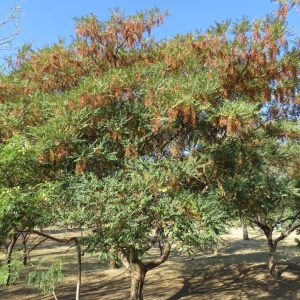Description
Talipariti elatum, commonly known as the Blue Mahoe, is a tree species belonging to the Malvaceae family. It is native to the Caribbean, Central America, and South America and is also popular in countries like Brazil, Colombia, Costa Rica, and Jamaica. This tree can reach heights of up to 65 feet, boasting a conical or pyramidal shape with a single straight and thick trunk, typically measuring 11 to 16 inches in diameter. The bark of the Blue Mahoe features deep furrows.
Flowering and Foliage of Talipariti elatum
Furthermore, branches of the blue mahoe (Talipariti elatum) are thick and stout, with leaves that are large, dark green, and heart-shaped. The foliage is dense, forming a broad, rounded crown at the top of the tree. The leaves are arranged in an alternate pattern along the branches, with a length of up to 11 inches and a width of up to 10 inches.
Talipariti elatum, commonly known as the blue mahoe, produces large, fragrant, and showy flowers that bloom in clusters from the middle of summer to the beginning of fall. These flowers are pink to purple in color and can reach a diameter of up to 6 inches. The fruit of this tree is a round woody capsule with fine hairs. Each fruit contains several black small seeds of approximately 2 millimeters in diameter.
Soil Type and Plant Requirements
The Blue Mahoe (Talipariti elatum) is popular in wetland areas such as swamps, as well as in areas with sandy soils. It prefers well-drained soils with high moisture content. Plus, it’s widely tolerant of salt spray, making it suitable for coastal regions.
Landscape Applications of Blue Mahoe
The blue mahoe (Talipariti elatum) is an excellent choice as a shade tree, street tree, or accent tree in South Florida landscaping. Its large, heart-shaped leaves and beautiful bark make it an attractive addition to any garden. Thanks to its resistance to pollution and other environmental challenges. The blue mahoe is particularly notable for its resilience and durability, a prominent feature in urban environments.
Occasionally, the blue mahoe (Talipariti elatum) and the variegated mahoe (Talipariti tiliaceum ‘Variegata’) are mistaken for each other. Although they both belong to the Malvaceae family and share some characteristics, they are two distinct tree species. The leaves of the two species are the primary distinguishing feature. While the leaves of the variegated mahoe are smaller and exhibit striking cream or yellow patterns. The leaves of the blue mahoe are broader, darker green, and heart-shaped.
🌳Other popular and beautiful plants: Grevillea Robusta.










